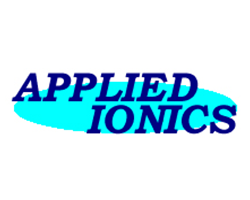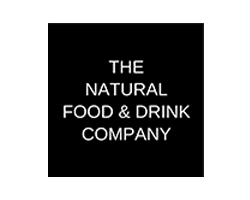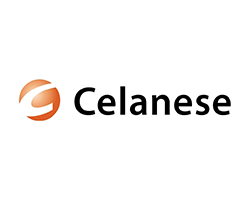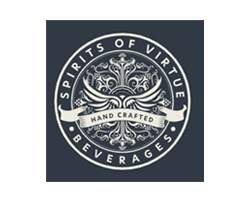Inline Filters
Protecting industrial, water treatment, and food & beverage manufacturing processes from contamination in raw materials, ingredients and water.
Inline filters and strainers provide a simple and cost-effective method of removing larger solids and debris from process fluids preventing from entering processes and damaging valves, pumps, seals, and heat exchangers. Installing as the first line of defence reducing clogging, minimises downtime, extends service life, and lowers operating costs. Inline filters and strainers integrate easily into existing pipework with minimal modification.
With flow rates from 0.5 to 300 m³/h, systems can be fitted with disposable cartridge filters, filter bags, and carbon filters or cleanable stainless-steel baskets, offered in micron ratings from 2,000 to 50 µm, providing a sustainable option.
Mesh Filters and Basket Strainers
Our 316 stainless steel mesh baskets are cleanable and then reusable. Available in micron ratings from 2,000 to 50 microns
Inline Industrial Housings
Single filter 304 or 316 st.st housings for industrial liquid applications for flows from 1 to 5 m3/hr and accept either filter cartridges or bags.
Y and T Strainers
Available in Y, T, and Duplex configurations. Our strainers minimisie equipment downtime by preventing contamination entering your site.
Frequently Asked Questions
A filter is designed to remove fine particles (often measured in microns) using filter media such as pleated cartridges, depth filters, or membranes. A strainer, by contrast, removes larger debris using a wire mesh or perforated screen. Strainers are typically used as a first line of defence to protect pumps, valves, nozzles, and other downstream equipment.
An inline strainer is installed directly in a pipeline. As liquid flows through, the mesh or perforated basket traps unwanted solids and debris, allowing clean fluid to pass downstream.
Inline strainers are widely used in water, chemicals, oil & gas, food & beverage, and HVAC systems.
The main types are:
- Y-Strainers – compact, cost-effective, good for light-duty protection and low contamination loads.
- T-Strainers (Tee Strainers) – larger screen area, designed for higher flow or contamination levels.
- Basket Strainers – removable basket with high dirt-holding capacity, easier to clean, ideal for continuous-duty systems.
- Automatic/Self-Cleaning Strainers – use scrapers or backwash systems to clean without stopping flow.
A mesh filter uses woven wire mesh to trap particles. The “mesh size” refers to the number of openings per inch:
- 20 mesh ≈ 840 microns
- 100 mesh ≈ 150 microns
- 200 mesh ≈ 74 microns
The higher the mesh number, the finer the filtration.
- Mesh size = number of openings per inch of screen.
- Micron rating = the actual size of the particle the screen can retain (1 micron = 1/1000th of a millimetre).
For example, a 100-mesh screen has openings of about 150 microns.
Read more about micron ratings in our article: Micron Rating Selection Guide
It depends on your application:
- Pump & valve protection: 40–100 mesh (400–150 microns).
- Sand, grit, and rust removal: 60–200 mesh (250–74 microns).
- Spray nozzles & injectors: 200 mesh or finer.
- Y-Strainer: Small, compact, lower cost, holds less debris, requires more frequent cleaning. Best for light contamination and smaller pipelines.
- Basket Strainer: Larger dirt-holding capacity, easier to clean, designed for high flow rates and dirtier fluids. Best for continuous operation and industrial processes.
Sizing is based on:
- Pipe diameter – match strainer to pipeline size.
- Flow rate – ensure adequate capacity without excessive pressure drop.
- Micron/mesh rating – select based on required protection.
- Dirt load – larger baskets or automatic strainers for heavily contaminated systems.
This depends on strainer size, screen area, and mesh chosen. Basket strainers are designed for higher flow rates than Y-strainers because they have a larger screen surface area. Always check manufacturer flow rate charts.
- Manual cleaning: Remove and wash the basket or mesh.
- Blow-off/flush option: Some Y-strainers allow flushing without disassembly.
- Automatic cleaning: Self-cleaning strainers continuously remove debris without stopping flow.
Clean when differential pressure across the strainer rises 5–10 psi. Install gauges or alarms on critical systems to signal cleaning. Frequency varies depending on contamination levels and mesh size.
- Carbon steel: General-purpose industrial use with the option for rubber lining.
- Stainless steel (304/316): Corrosion-resistant, ideal for food, beverage, and chemicals.
- Plastic (PVC, PP, HDPE): Lightweight and chemical-resistant, widely used in water treatment.
No. Strainers are pre-filters designed to remove larger solids.
For fine filtration (sub-micron to sterile applications), use cartridge filters, depth filters, or membranes downstream.
Common applications include:
- Water treatment – sand, grit, and rust removal.
- Chemical processing – protecting pumps, heat exchangers, and valves.
- Oil & gas – protecting turbines, compressors, and separators.
- Food & beverage – removing pulp, seeds, or solid contaminants.
- HVAC & utilities – protecting chillers, boilers, and cooling towers.
Yes. 304 and 316 stainless steel strainers are widely used in potable water applications because they are corrosion-resistant, durable, and hygienic.
Self-cleaning strainers use backwashing, scrapers, or brushes to continuously remove solids from the screen without shutting down the system. They are ideal for systems with high dirt loads or where continuous operation is essential.
Explore Related Articles
Watch our video on Prefiltration HERE
All our filter products are manufactured to the highest quality standards with certificates of conformity and validation guides that can be provided upon request.
- All filters used in the food & beverage markets are EU and FDA compliant for material in food contact. Additionally certain products are Halal or Kosher certified.
- Filters for use in healthcare or pharmaceutical applications meet the requirements of US FDA 21 and evaluated in accordance with USP Class VI plastics.
- Products provided for automotive use in paint systems are silicone free.
Talk to us today about your filtration requirements
-
Extensive product range
-
Best Price GUARANTEED!
-
Specialist support team with deep knowledge of liquid & gas applications
-
Reliable quality & delivery
Customers We Work With















